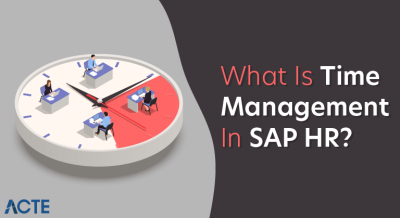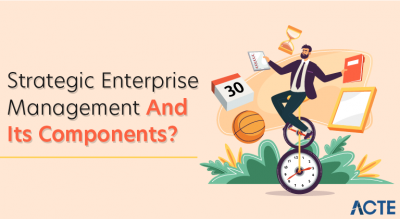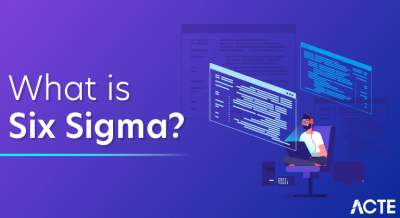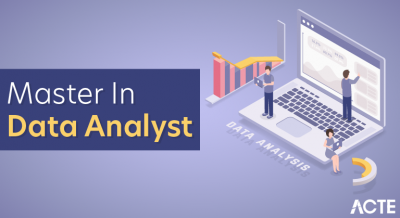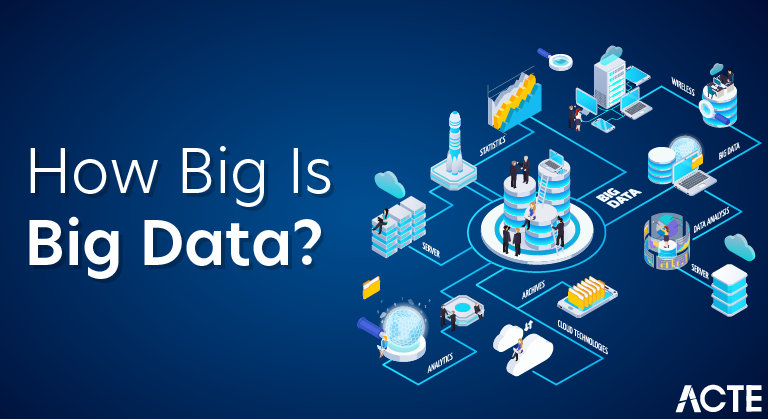
OLTP and OLAP: The two terms look similar but refer to different kinds of systems. Online transaction processing (OLTP) captures, stores, and processes data from transactions in real time. Online analytical processing (OLAP) uses complex queries to analyze aggregated historical data from OLTP systems.
- Introduction to OLTP vs OLAP
- Comparisons of OLAP vs OLTP
- Features of OLAP Vs OLTP
- >Key Difference between OLTP and OLAP
- Drawbacks of OLAP and OLTP
- Parameters of OLTP and OLAP
- Why Android Services
- Defining custom services
- Benefits of Android Services
- Conclusion
Introduction to OLTP vs OLAP:
OLTP and OLAP: each term looks similar however confer with differing types of systems. on-line group action process (OLTP) captures, stores, and processes knowledge from period of time transactions. on-line analytical process (OLAP) uses complicated inquiries to analyze aggregate historical knowledge from OLTP systems.
OLAP uses complicated queries in massive amounts of historical knowledge, compiled from the OLTP website and alternative sources, to extract knowledge, analysis, and business intelligence. At OLAP, stress is placed on respondents to these complicated queries. Every question includes one or additional columns of information compiled from multiple rows. Examples embody annual money performance or key production trends.
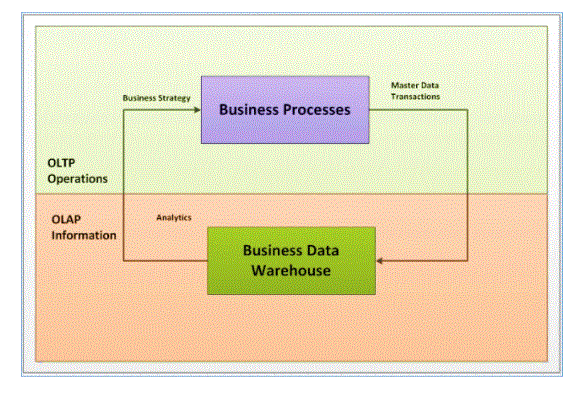
- OLAP (Online Analysis Process) OLTP (Online Analysis Process)
- Contains historical knowledge from numerous Databases. Contains solely current performance knowledge.
- It focuses on the subject. Used for data processing, Statistics, higher cognitive process, etc. Directed to the application. Used for business activities.
- Data is employed for coming up with downside determination and higher cognitive processes. knowledge is employed to perform necessary daily tasks.
- Displays an outline of current business activities. It provides a multi-dimensional read of the varied business activities.
- A large quantity of knowledge is sometimes hold on in TB, lead {the knowledge|the info|The information} size is comparatively little because the historical data is held on within the archive. For ex MB, GB
Comparisons of OLAP vs OLTP:
- The OLAP system should ignore all missing values and calculate the correct combined values.
- OLAP makes it easy to ask complex questions and analyzes to users.
- OLAP allows users to dial down for more details or wrap up to get metric integration on one business side or multiple sides.
- OLAP provides the ability to perform complex calculations and comparisons.
- OLAP presents results in a number of useful ways, including charts and graphs.
Features of OLAP Vs OLTP:
Explaining which system is targeted at delivering maximum response to a client within five seconds, basic analysis does not take more than one second and very few take more than 20 seconds.
Analysis
Explains how to approach any business mindset and statistical analysis that is right for the job and the user, keeping it simple enough for the targeted client. Although some editing may be required we do not consider it unacceptable if all the app definitions should allow the user to define new Adhoc stats as part of the analysis and write data in any desired format, without editing so we do not get involved.
Share
It describes which system utilizes all security requirements to be understood and, if a multidisciplinary connection is required, simultaneous update location, not all operations require the customer to retrieve data, but with the growing value it does, the system must be able to manage multiple updates at a time, securely.
Multidimensional
This is a basic requirement. The OLAP system should provide a multi-dimensional concept of data, which includes full category support, as this is certainly the most sensible way to analyze businesses and organizations.
The main features of OLAP are as follows:
Multi-dimensional view: OLAP systems allow business users to have a biased and logical view of the data in the database. It helps in managing piece operations and dice.
Multiple User Support: As OLAP strategies are distributed, OLAP operations should provide general information functions, consisting of retrieval, updating, content control, integrity, and security.
Accessibility: OLAP acts as a link between data storage and pre-storage. OLAP operations should be located between data sources (e.g., data storage areas) and the OLAP pre-location.
Saving OLAP results: OLAP results are stored separately from data sources.
Equal write functionality: Increasing the size or size of a website should not significantly reduce the reporting performance of the OLAP system.
OLAP provides a distinction between zero values and deficit values so that estimates can be calculated accurately.
OLTP symbols:
1. Short response time
OLTP systems keep response times too short for users. For example, responses from ATM operations need to be quick to make the process more efficient, efficient, and easier.
2. Specify a small transaction
OLTP systems support multiple transactions with a small amount of data generated simultaneously on a network. It can be a mixture of queries and overloading of Data Deception (DML) language. Questions usually include entries, deletions, updates, and related actions. Response time measures the efficiency of OLTP operations, and millisecond responses are common.
3. Data storage functions
Database functions are computer-based data reporting and data recovery programs that work in conjunction with OLTP systems without interrupting users’ queries.
4. High-performance volume and multi-user access
OLTP programs are like a large number of users accessing the same data at the same time. The online purchase of a popular or trending gadget like the iPhone may involve a large number of users all vying for the same product. The system is designed to manage such situations effectively.
5. Very high consistency
The OLTP site encounters very high compliance due to overcrowding, low performance, and very short response times. However, the integrity of the data is maintained by a compatible algorithm, which prevents two or more users from converting the same data at the same time. Prevents double booking or distribution of online tickets and sales, respectively.
6. Availability around
OLTP systems usually need to be available around the clock, 24/7, without interruption. The limited time available or offline work can greatly affect a large number of people and an equally large amount of work.
7. Data usage patterns
OLTP systems meet your times for both high data usage and low data usage. OLTP-related financial systems often detect high data usage over the end of the month when financial obligations are resolved.
8. Data sets are indexed
Reference data sets are used to facilitate quick query, search, and retrieval.
9. Normal schema
OLTP systems use the fully customized schema for site consistency.
10. Storage
The OLTP keeps data records for the past few days or about a week. Supports complex data models and tables.
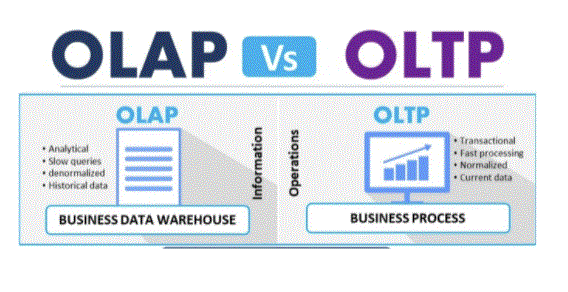
KEY DIFFERENCE between OLTP and OLAP:
Online Analytical Processing (OLAP) is a segment of software tools that analyze data stored on a site while Online transaction processing (OLTP) supports commercial applications focused on 3 phase structures.
OLAP creates a single platform for all types of business analysis needs including planning, budgeting, forecasting, and analysis while OLTP is useful in managing the day-to-day operations of the organization.
OLAP is characterized by large data volumes while OLTP is characterized by large numbers of short internet activity. In OLAP, the database is created differently to integrate different data sources to create an integrated database while OLTP uses the standard DBMS.
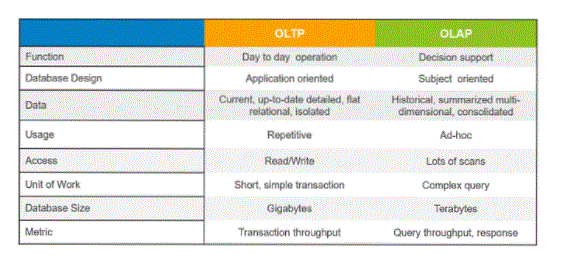
- Implementation and operation and maintenance rely on IT experience as a result of ancient OLAP tools needing a classy modeling method.
- OLAP tools need collaboration between individuals of various departments so as to figure what might not invariably be attainable.
- OLTP methodology errors
- If the OLTP system is experiencing hardware failure, then online transactions square measure are severely affected.
- OLTP systems enable multiple users to access and modify constant knowledge at a constant time that has created several unexampled things.
Drawbacks of OLAP and OLTP:
- Parameters OLTP OLAP
- Process It is an online trading system. Controls website conversion. OLAP is an online analysis and data recovery process.
- Feature characterized by large numbers of short online transactions. It is characterized by a large amount of data.
- OLTP functionality is an online data conversion program. OLAP is an online query management system.
- The OLTP method uses standard DBMS. OLAP uses a data warehouse.
- Enter Question, Update, and Delete information on the website. Especially select jobs
- Tables in the OLTP website are standard. Tables on the OLAP website are not standardized.
- The OLTP source and its functions are data sources. Different OLTP websites become a data source for OLAP.
- Data The integrity of the OLTP data should keep the data integrity limit. The OLAP website is infrequently modified. Thus, data integrity is not a problem.
- Response Time Response time is milliseconds. Response time in seconds to minutes.
parameters of OLTP and OLAP:
Below are the differences between OLAP and OLTP in the Data Warehouse:
The OLTP style is designed to have a fast response time, low data duplication and standardization. The database is structured differently to integrate different data sources to create an integrated website.
1. Business Strategy- The business strategy influences the look of OLTP systems. The strategy relies on senior management and also the level of the board of administrators.
2. Business method- They are the processes of the OLTP system that may win the goals set by the business strategy. Procedures embrace a group of tasks, tasks, and actions.
3. Product, client/provider, Sales, Staff- The OLTP website contains data regarding merchandise, services, employees, customers, and suppliers.
4. Extraction, conversion, loading (ETL) method.- The ETL method extracts information from the OLTP website and converts it into a platform, which has processing and optimization of knowledge for analysis. The born-again information is then uploaded to a web analytical process (OLAP) website, like info.
5. information Warehouse and information retail store- Data repositories are integrated repositories from one or additional invalid sources. information retail store is an adjunct info that’s accustomed to access specific / outline data of a unit or department.
6. data processing, Analysis, and higher cognitive process- Data held within the info and information center is employed for analysis, data processing, and higher cognitive processes.
7. OLTP System style- Designing an associate OLTP system needs knowing its basic options like atomicity, concurrency, and integrity likewise as avoiding overuse of collections and clues.
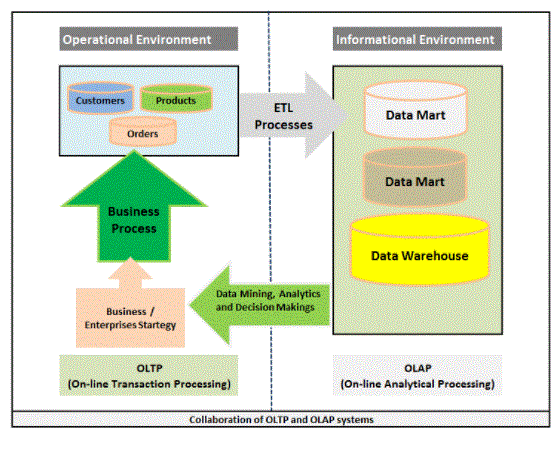
- The OLAP Council (1997) defines Online Analytical Processing (OLAP) as a decision-making support system that facilitates quick, consistent and cohesive access to information that has been reorganized, modified and summarized from relationship databases primarily from the Database database to Multi-Dimensional Databases ) MDDB) which allows complete data retrieval and performance analysis styles. OLAP is an important concept for strategic data analysis. OLAP has the ability to analyze large amounts of data in order to extract important information. Analytical development can be in the business, educational or medical field. Database technology, OLAP, and analytics tools support that capability.
- Online Analytical Processing (OLAP) enables a pattern of discovery and relationships containing business activity with tons of query data from multiple data systems at once. Processing site information using OLAP required an OLAP server to configure and modify and build MDDB. MDDB is then divided into cubes into OLAP client tools to perform data analysis aimed at finding new pattern relationships between cubes.
- The fact is that Online Analytical Processing (OLAP) and data warehouse are complementary technologies that come together. A data repository stores and manages data while OLAP converts warehouse data sets into strategic information. The work of OLAP ranges from basic navigation and browsing (commonly known as “piece and dice”), to mathematics and in-depth analysis such as time series and complex modeling. As decision-makers use the advanced skills of OLAP, they move from basic data access to information creation to new information.
- Compared to a data repository generally based on interaction technology, OLAP uses a multi-dimensional view to compile data to provide quick access to strategic information for analysis. There are three types of Online Analytical Processing (OLAP) structures based on the way they store multilateral data and perform analytical functions in that database. The categories are multidimensional OLAP (MOLAP), relational OLAP (ROLAP) and hybrid OLAP (HOLAP).
- In MOLAP, data sets are stored and summarized in a multidimensional cube. MOLAP properties can work faster than ROLAP and HOLAP (C). OLAP cubes are designed and built for faster data retrieval to improve cutting and dialing efficiency. MOLAP can perform complex calculations that were previously made after the creation of a cube. MOLAP processing is limited to the original cube created and is not bound to any additional cube multiplication.
- In ROLAP, data and integration are stored in related web tables to provide OLAP cutting and dial operation. ROLAP moves slowly between OLAP flavors. ROLAP relies on direct conversion of data into related websites to provide standard cutting and dialing of OLAP. Basically, each action cutting and dialing is equivalent to adding the “WHERE” clause to the SQL statement. ROLAP can handle large amounts of data and ROLAP has no limit on data size. ROLAP may influence the internal functioning of the related site. ROLAP is slow to implement because each ROLAP function is actually a SQL query or multiple SQL query on a related website. Question time and number of SQL statements used in terms of its complexity of SQL statements and can be bottled if the base database size is large. ROLAP relies on the production of SQL statements to inquire about related websites and does not provide all the requirements that make ROLAP technology generally limited by what SQL provides.
- HOLAP combines MOLAP technology with ROLAP. Data is stored in ROLAP affiliate website tables and ratings are stored in the OLAP cube. HOLAP can drag down multidimensional cube to basic data related data. To get the type of information summary, HOLAP uses cube technology to work faster. Although it receives some kind of information, HOLAP can pull down from the cube to the basic data.
- In the form of Online Analytical Processing (OLAP) (MOLAP, ROLAP and HOLAP), data sets are stored in multidimensional format as they involve the construction of multi-sided blocks called data cubes. The cube in OLAP buildings can have three axes (size), or more. Each axis (size) represents a logical category of data. One axis may, for example, represent a data center location, while another may indicate a specific time period or school. Each level can be divided into successive levels and it is possible to bounce up or down between levels.
OLAP Architecture and System Design:
OLAP ARCHITECTURE
ONLINE ANALYSIS ARCHITECTURE (OLAP).
- OLAP creates one platform for all kinds of business analysis desires together with coming up with, budgeting, statement, and analysis.
- The main advantage of OLAP is the consistency of knowledge and statistics.
- Easily apply user and material definition restrictions to go with laws and protect sensitive knowledge.
- Controls the everyday operations of the organization.
- OLTP enhances the company’s client base by simplifying individual processes.
Benefits of using OLAP services and OLTP Service:
Advantages of the OLTP methodology
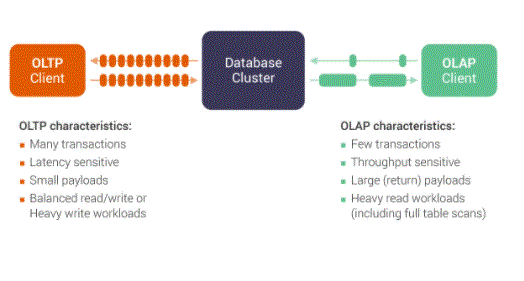
Conclusion
OLTP is an online data exchange system while OLAP is an online multi-dimensional data recovery system, which provides data that can help a business analyze performance, develop strategies and make decisions. The OLTP system is an OLAP environment data provider. Systems work for different purposes but both help to deal with large amounts of data. OLAP is ready to let you find the locations, time and reasons purchased by your customers, anticipate market trends and future demands due to data mining and analysis, while OLTP can provide your clients with personalized loyalty programs and provide them with reliable service.

